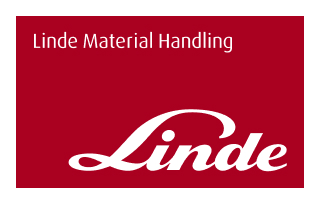- Blog
- Customers


Quick question – can you name a brand of office paper? If you can, there’s an extremely high probability you’ll name Reflex, the market leader since 1984. Reflex is produced by Australian Paper and has a reputation for quality and dependability, just like Linde, the company whose forklift fleet the paper manufacturer has now adopted. There are other similarities between the reasons which led Australian Paper to take on over 60 pieces of Linde equipment and the reasons why its customers choose Reflex paper.
Australian Paper, owned by Nippon Paper Industries, is an Australian registered company with over 70 years history in the local manufacture of pulp, paper and packaging. It employs nearly 1,300 people and has mills at Maryvale in the Gippsland region of Victoria and at Bomaderry in the NSW Shoalhaven region. Forklift operations are crucial to its manufacturing and warehouse functions. Australian Paper manufactures pulp, paper, envelopes and stationery. It is Australia’s leading manufacturer of printing and writing stocks and Australia’s only manufacturer of recycled content bag papers. The company is also a major supplier of Kraft liner board used in the production of corrugated boxes and produces around one and a half billion envelopes annually, making it the largest envelope manufacturer in Australia. In 2014, Australian Paper produced over 600,000 tonnes of paper products, 450,000 tonnes of pulp, and sold almost 690,000 tonnes of its products to local and overseas markets including 75 countries in Asia, USA, Europe, Middle East, the Indian subcontinent, Latin America and Africa. This year it has commissioned a $90 million recycling plant at the Maryvale site, making use of up to 90,000 tonnes of wastepaper which would otherwise go to landfill. To enhance its operations the company needed the best possible material handling equipment.
Australian Paper’s Linde fleet of predominantly gas-powered counterbalance forklifts has recently completed its first year of successful service for the company. The fleet spans lifting capacities from 1.8 tonnes to 8.0 tonnes – the majority equipped with paper roll clamps, pulp clamps, fork positioners or bale clamps. “We had gone beyond the agreement period with our previous equipment supplier and we needed to review our fleet requirements at both Maryvale and Shoalhaven,” Australian Paper Contracts Manager Neil Donoghue said. “Our plan was to look for a provider who could source all of our equipment needs including a boomlift, sweepers and an articulated electric vehicle, maintain the equipment and be more than just a vendor to us. We also wanted an arrangement which would be cost effective for us – not simply in terms of equipment rental prices, but rather in total cost of ownership.”
After considering responses to an industry-wide request for statements of capability Australian Paper shortlisted six companies for further discussions, then two and ultimately chose Linde.
“We went into this selection process with open minds but also with some experience of Linde equipment,” Neil Donoghue said. “For a couple of specialised roles we’ve relied on Linde equipment for perhaps 12 years, even as the bulk of our fleet was supplied by other companies. There are aspects of Linde equipment which have proved very beneficial to the operation, particularly comfort levels. Some of our operational areas were keen to see Linde equipment selected, or something with very similar characteristics. This was particularly the view of operators who spend the majority of a 12 hour shift sitting in a forklift in an operational capacity.”
“There was a big push from the operational areas where the feedback was that these are highly capable trucks with good ergonomics. That fed into our decision making process. We have chosen Linde equipment over the last 12 years for demanding roles where there has been a high level of equipment utilisation. Prior to this agreement we had five Linde units. Now we have more than 60.” Of course with the realisation that various pieces of equipment are going to have very high levels of utilisation the selection of a long term rental period is crucial. “At the end of the day we have gone with a six year term,” Neil Donoghue said. “We’ve based that on the fact that we are confident the Linde equipment will continue to perform long term, even with our highest usage machines. We are clocking up 300-plus hours a month, not just on one or two pieces of equipment, but a significant proportion of our fleet. The Linde pricing is also more competitive when you are looking at comparisons with other providers’ equipment in that light.”
Australian Paper has also enlisted the Linde FleetFOCUS fleet management program to put it in the driver’s seat with its forklift fleet. It’s a much more capable system than what we had previously,” Neil Donoghue said. “We are still not using its full potential, so we are working through our various site challenges with Linde. That’s one of the aspects of the partnership which we wanted with a supplier. To sum up our fleet renewal I’d have to say that we have had really positive acceptance of the equipment, from the time Linde and our own people conducted the first familiarisation and training sessions. We’ve got a fleet with the latest technology and particularly high safety and comfort performance and we have achieved exactly the outcome we were looking for at the start of this exercise. “
For more information on how Linde can help your business, contact Linde Material Handling today.